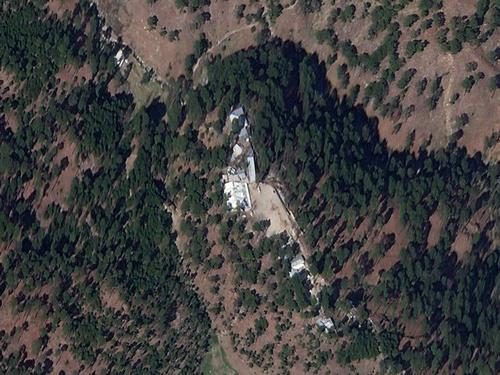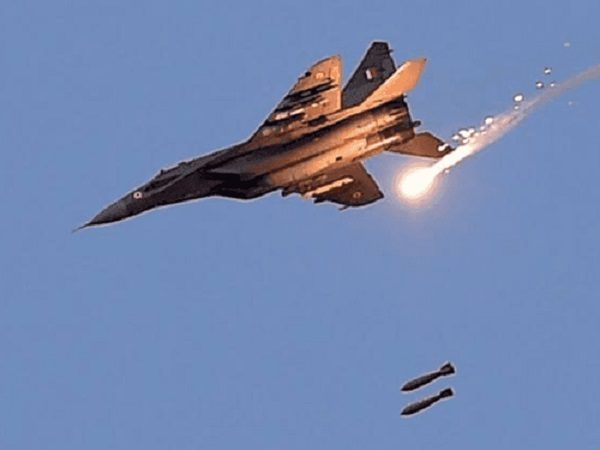The whole pretense behind the bold Indian incursion into Pakistani airspace was to bomb terror training camps belonging to Jaish-e-Mohammad, a response to the group's Feb. 14 suicide bombing of a bus carrying Indian paramilitary police reserve officers, which killed 40.
India had vowed a swift and fierce response while denouncing Pakistan seeming tolerance of the terror group on its soil. But now Reuters is questioning India's narrative after examining new high-resolution satellite images of the site near Balakot in Khyber Pakhtunkhwa province of northeast Pakistan:
High-resolution satellite images reviewed by Reuters show that a religious school run by Jaish-e-Mohammad (JeM) in northeastern Pakistan appears to be still standing days after India claimed its warplanes had hit the Islamist group's training camp on the site and killed a large number of militants.The images, produced by San Francisco-based private satellite operator Planet Labs Inc, show that nearly a week after the Indian airstrikes, there's little to no damage on the Jaish-e-Mohammad terror camp that the Indian Air Force claimed to have successfully taken out.

Reuters continues:
Until now, no high-resolution satellite images were publicly available. But the images from Planet Labs, which show details as small as 72 cm (28 inches), offer a clearer look at the structures the Indian government said it attacked.The new report based on the images flatly contradicts the official version of events repeated by both the Indian armed forces and Prime Minister Narendra Modi - namely that all intended targets and the madrasa site were taken out - and Reuters speculates that either the bombing raid missed the targets altogether or was fabricated as part of a politically convenient narrative.
The image is virtually unchanged from an April 2018 satellite photo of the facility. There are no discernible holes in the roofs of buildings, no signs of scorching, blown-out walls, displaced trees around the madrasa or other signs of an aerial attack.
Did last week's events which resulted in a full-blown armed stand-off and dangerous war of words originate from Modi's desire to appear tough under pressure in response to the Feb. 14 police bus bombing? As Reuters points out, "India must hold a general election by May, and pollsters say Modi and his Hindu nationalist party stand to benefit from his aggressive response...".
Or perhaps once Modi committed to risking war with Pakistan in launching the aerial assault, it was realized that any failure to hit the intended target would be too politically embarrassing, considering the extremely high risk of the endeavor.
According to Reuters:
The images cast further doubt on statements made over the last eight days by the Indian government of Prime Minister Narendra Modi that the raids, early on Feb. 26, had hit all the intended targets at the madrasa site near Jaba village and the town of Balakot in Pakistan's Khyber Pakhtunkhwa province."The high-resolution images don't show any evidence of bomb damage," one East Asian affairs and satellite imagery expert cited in the report concluded.
The new findings appear to lend credence to Pakistan's version of events. From the start Pakistan's military claimed the Indian jets had merely dropped their bombs an a largely empty hillside amidst sustained Pakistani defense measures.
Major General Asif Ghafoor, spokesman for the Pakistani military, said, "There has been no damage to any infrastructure or human life as a result of Indian incursion." He added further of a ground investigation of the site: "This has been vindicated by both domestic and international media after visiting the site."
But Indian officials had claimed its jets had taken out as many as 300 terrorists at the site. Should India's version of events ultimately be debunked in international press, it would likely seal Modi's fate in the upcoming election, and could go down as among the most infamous false flags in the history of the Indian-Pakistan conflict.




Comment: See also: